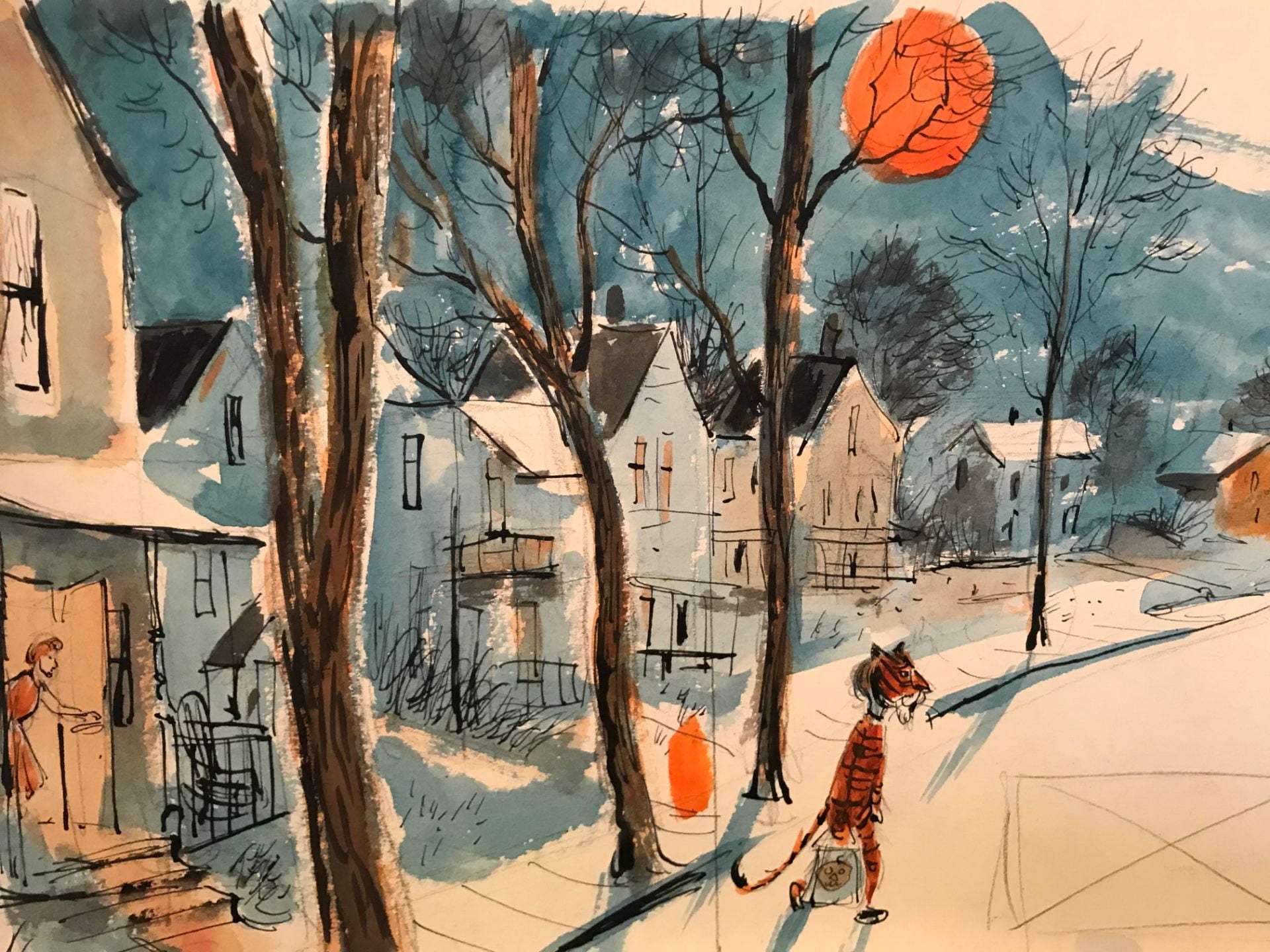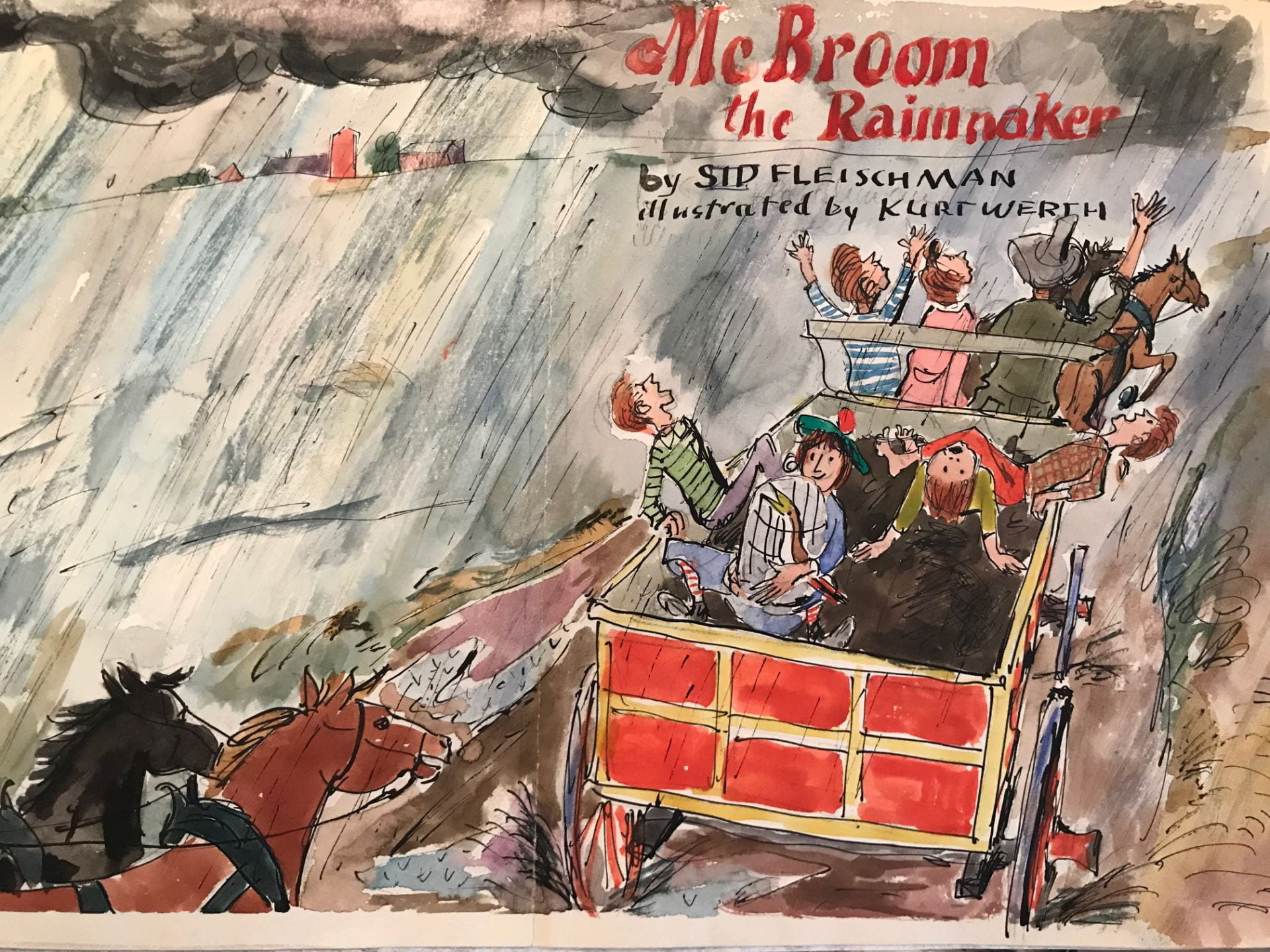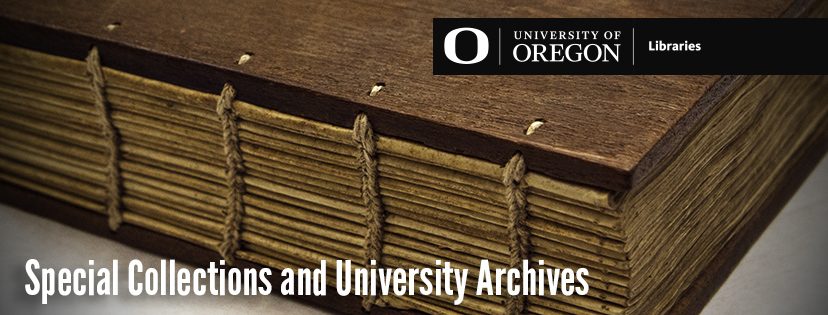NHPRC Grant | Kurt Werth papers
This is the second of a series of blog posts highlighting our NHPRC-sponsored project: Twentieth Century Children’s Literature: Exploring the Past, Understanding the Present. Previous posts can be found here.
Special Collections and University Archives is pleased to announce the publication of a newly revised finding aid for the Kurt Werth papers (Coll 100). The finding aid is available on Archives West.

The Kurt Werth papers represent a major portion of Werth’s body of work produced as an illustrator and author of American children’s literature. The collection is comprised of original children’s book illustrations and manuscripts, other artwork and manuscripts, personal papers, artifacts, personal and professional correspondence, and papers of his wife, Margaret Werth.
The children’s book illustrations and manuscripts primarily include original artwork created by Werth for children’s and juvenile books between the 1950s-1970s. The artwork represents a variety of stages in the illustration process and includes preliminary sketches, dummies, cover art, press-ready color-separated artwork, and proofs. It also includes typed and handwritten manuscript drafts for children’s books written by Werth, as well as manuscripts written by other children’s literature authors that Werth collaborated with including Rosalys Hall, Sid Fleischman, Millicent Selsam, and Lilian Moore.

Illustrator Kurt Werth (1896-1983) was born in Leipzig, Germany. He studied art at the State Academy for the Graphic Arts in Leipzig, including a hiatus when he was drafted to serve in the German army in World War I. In 1924, Werth began drawing satirical cartoons for the Munich magazine, The Jugend, and the Swiss magazine, Nebelspalter. Four years later he and his wife Margaret, an actress, moved to Berlin where she became part of the City Theater. Here, Werth created satirical cartoons for the Berliner Tageblatt, and the magazines Querschnitt and Simplicissimus, among others.
With Hitler’s increasing power, the magazines folded, and Margaret Werth, who was Jewish, was not allowed to work. In 1939 the Werths emigrated to the United States where Werth found employment illustrating a Sunday column in the New York Times Magazine. When the United States became involved in World War II, Werth began drawing cartoons for a number of the new magazines that had appeared on the political scene: Common Sense, Free World, The New Republic, Tomorrow, as well as Harper’s. After many of these publications folded at the conclusion of the war, Werth returned to book publishing. By the beginning of the 1950s, Werth was established in his career as an illustrator of American children’s books.

